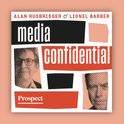There was something distinctly dental about Budapest during my most recent visit in early September. The sight of the bridges over the Danube reminded me of their smaller, oral, counterparts. The iconic Gothic Revival parliament appeared to me as upside-down-dentures, with the roots (read turrets and spires), pointing upwards. I am not the first man of letters to be darkly fascinated with things dental: among many examples of similes and metaphors in modern English literature, they have been compared to: “headstones under a winter moon”; “cashews”; “discoloured choirboys”; “row of alabaster Britannicas”; and even “unregistered weapons”. But why did they come to mind in Budapest? Because the Hungarian capital has been Europe’s “dental tourism” Mecca for more than 100 years, and dental treatment there is not only better-quality, but also much cheaper than at home in the UK.
It was in Budapest that I had my “Dental Dignitas” experience several years ago. By that time, I already had a serious dental problem. To be more exact, I had 13 such problems—equal to the number of my remaining teeth. I was told they all had to go to make space for implants, and when I asked if I could keep at least one as a souvenir of all the beautiful food I had consumed, they said that I could indeed, but I would have to carry it in my pocket.
Yes, I was then a typical victim of my First Life’s merciless Soviet dentistry, where tooth extraction was the main and often only method of “treatment”. My crudely extracted teeth have been scattered all over the former Soviet Empire. I had them pulled out with pliers (with no anaesthetic), knocked out with a hammer and a chisel and taken out with bare (and not very clean) dentist’s hands. On a couple of occasions, I had perfectly healthy teeth extracted by mistake.
To cut a long story short, all my remaining “cashews” had to be removed on my first dental visit to Budapest. Technologically speaking I was subjected, under general anaesthetic, to 13 teeth extractions and 10 implants, carried out by Europe’s leading implantologist Attila Kaman. It was done within a couple of days and was all but painless.
The best definition of an acute toothache, to my mind, comes from the book The Mosaics of Life by Valentin Kataev, who described it as “a wavering red-hot line, beginning at the spot of the exposed nerve, surrounding the jaw, rising along the temple-bone and exploding somewhere in the depth of the hearing area.” Ouch!
Having rid me forever (or so I hope) of toothache, my “Dental Dignitas” experience, however, brought about other inconveniences—less painful, yet at times quite embarrassing.
My new implants, like any pieces of technology, needed adjustments and maintenance, and therefore required more visits to Budapest, the latest of which was in September.
On every such visit, I was greeted like an old friend at the familiar Implant Centre in Budapest. While the implants were fixed, I was usually supplied with temporary plastic dentures to allow me to keep consuming delicious Hungarian goulashes and dumplings.
Once, in the company of my wife, I sat down to lunch in my favourite Budapest pub, Polo. Staring eagerly at the steaming plate of delicious bean soup in front of me, I picked up a piece of bread and bit into it, at which point my temporary upper jaw broke with a loud cracking sound and fell into the soup plate with a splash. It was embarrassing indeed, but my wife couldn’t refrain from giggling.
An agile waiter, who had witnessed the scene, ran up to our table promptly. “Shall I call an ambulance?” he asked worriedly.
“I think a welding engineer would be more appropriate,” I hissed through my non-existent, yet still clenched, teeth.
Regular visits to Budapest also helped me develop an interest in the history of dentistry, from when Etruscans made the first dentures and tooth pulling was routinely carried out by barbers and fairground entertainers, to the modern age of implants and cosmetic surgery. No longer experiencing the excruciating pain, I now find fiendish pleasure in reading about all those dental forceps, dynamos, mouth lamps, dental engines and much-dreaded drills. Richard Barnett’s richly (almost lovingly) illustrated 2017 book, with an appropriately tongue-in-cheek title The Smile Stealers: The Fine and Foul Art of Dentistry is an excellent resource. I would not hesitate to recommend it to Prospect readers, both toothless (like me) and toothful.
I want to finish with a quote from that jaw dropping, if not quite mouth-watering, book: “Possession of a functional, pain-free mouth is practical necessity, but it is also central to our sense of self.” I couldn’t agree more.













